By CDR Salamander, Substack
In what was the last moment of reprieve for the agents of division inside the Annapolis Diversity Industry, on the day before Pearl Harbor Day 2024 in the case Students for Fair Admissions (SFFA) v. U.S. Naval Academy (USNA), Judge Richard Bennett ultimately ruled in favor of USNA allowing race-based admissions to continue.
I wrote about it at the time, and here is how I ended my post in December:
As we’ve said for a very long time, their ideas and programs cannot survive the light of day…and more and more light is coming at them.
Discovery. Oh the glories of discovery.
Even when you lose some battles, the efforts you make in that struggle will bear fruit when the seasons change, and boy do we have a bumper harvest.
The Manhattan Institute’s Zach Goldberg earlier this month brought all the receipts. Let him provide a quick refresher:
The views expressed in this report are my own and do not reflect the views of any of the parties involved in the case or the institutions referenced. Where this report references materials from Students for Fair Admissions (SFFA) v. U.S. Naval Academy (USNA), it does so solely on the basis of publicly available records from the case—most of which were downloaded via PACER. All cited documents can be accessed and downloaded here.
Race-conscious admissions are illegal in American universities—and, as of February 2025, are now banned at the institutions that train the nation’s military leaders. This dramatic shift followed President Donald Trump’s January 27, 2025, executive order prohibiting race- or sex-based preferences across the U.S. Armed Forces, and a subsequent directive by Defense Secretary Pete Hegseth enforcing those principles throughout the Department of Defense.
In response, the Superintendent of the U.S. Naval Academy (USNA), Vice Admiral Yvette Davids, formally revised the Academy’s admissions policy on February 14, 2025. The new guidance prohibits consideration of race, ethnicity, or sex at any stage of the admissions process—a change confirmed in Senate testimony and a Department of Justice court filing.1
Although USNA has insisted that its use of race was “limited” and “non-determinative,” it also admitted to never having studied the impact of race on the composition of its admitted classes.
Moreover, statistical analysis of admissions data tells a different story: a White applicant with a 5% chance of admission would have a 50% chance if evaluated as Black, and more than 70% of Black admits would not have been admitted under a race-neutral system. These findings, among similarly damning others examined in this report, directly contradict USNA’s characterization of its policies.
Let’s pause for a moment and look at this bit again.
…it also admitted to never having studied the impact of race on the composition of its admitted classes.
I’m sorry…but no one who has been on active duty the last few decades believes that is a true statement unless you narrowly define “studied” to the point that it has no meaning. It simply isn’t true.
I won’t spend more time on recriminations about the culture of untruth in the Navy in general and USNA in particular. It is self-evident, and as outlined in Zach’s work, USNA’s unspoofable response to SFFS’s research just underlines the stain on the honor of the institution this whole project was/is.
What I would like you to do is to read all of Zach’s research on the topic. While you are doing that, think of all the official statements over the years that were just at best slimy sea-lawyer speak, but on balance just outright lies.
President Trump’s Executive Orders have changed the environment, at least temporarily. A real fix requires Congressional action, otherwise the next leftist CINC will just return to discrimination.
Yet even if the case is declared moot, its significance is far from extinguished.
First, the risk of policy reversal under a future administration is real—if not inevitable. Without stronger institutional safeguards, nothing prevents a future Secretary of Defense—or Academy Superintendent—from reinstating race-based preferences.
Second, if allowed to stand, the district court ruling sets a dangerous precedent: that other government agencies in a future administration may invoke vague claims of “national security” to justify racial classifications. The result would be a profound shift in equal protection jurisprudence, granting the executive branch a new and expansive justification for racial classifications in areas far beyond military personnel policy.
Finally, the legal, empirical, and policy arguments advanced in SFFA v. USNA offer a critical lens for evaluating the proper role of merit, fairness, and equality in military officer selection.
They will have to explain a lot of this. Again, no fair-minded person believes this. Those involved in the system cannot say this with a straight face:
While acknowledging that race factors into the foregoing areas of the admissions process, USNA repeatedly insists that this consideration is “limited,” “non-determinative,” and always part of a “holistic assessment that takes into account all aspects of an applicant’s file”.52
It maintains that no candidate is admitted “solely because of their race” and contends that, due to the congressional nomination process and WPM scoring, “race is not considered at all for many appointments to the Academy.”53
Yet despite these assertions, USNA simultaneously claims to have no insight into what the racial composition of its classes would look like absent the consideration of race. By its own admission, it has never conducted modeling to explore this question and offers no clear explanation for why such an analysis has not been undertaken.54
At the same time, USNA argues that eliminating racial considerations would cause minority enrollment to “drop dramatically,” a claim that stands in tension with its characterization of race as a minor and non-determinative factor in admissions.55
To keep this post brief, let me pull the graphs that tell the story well…you can find the detail in Zach’s post.
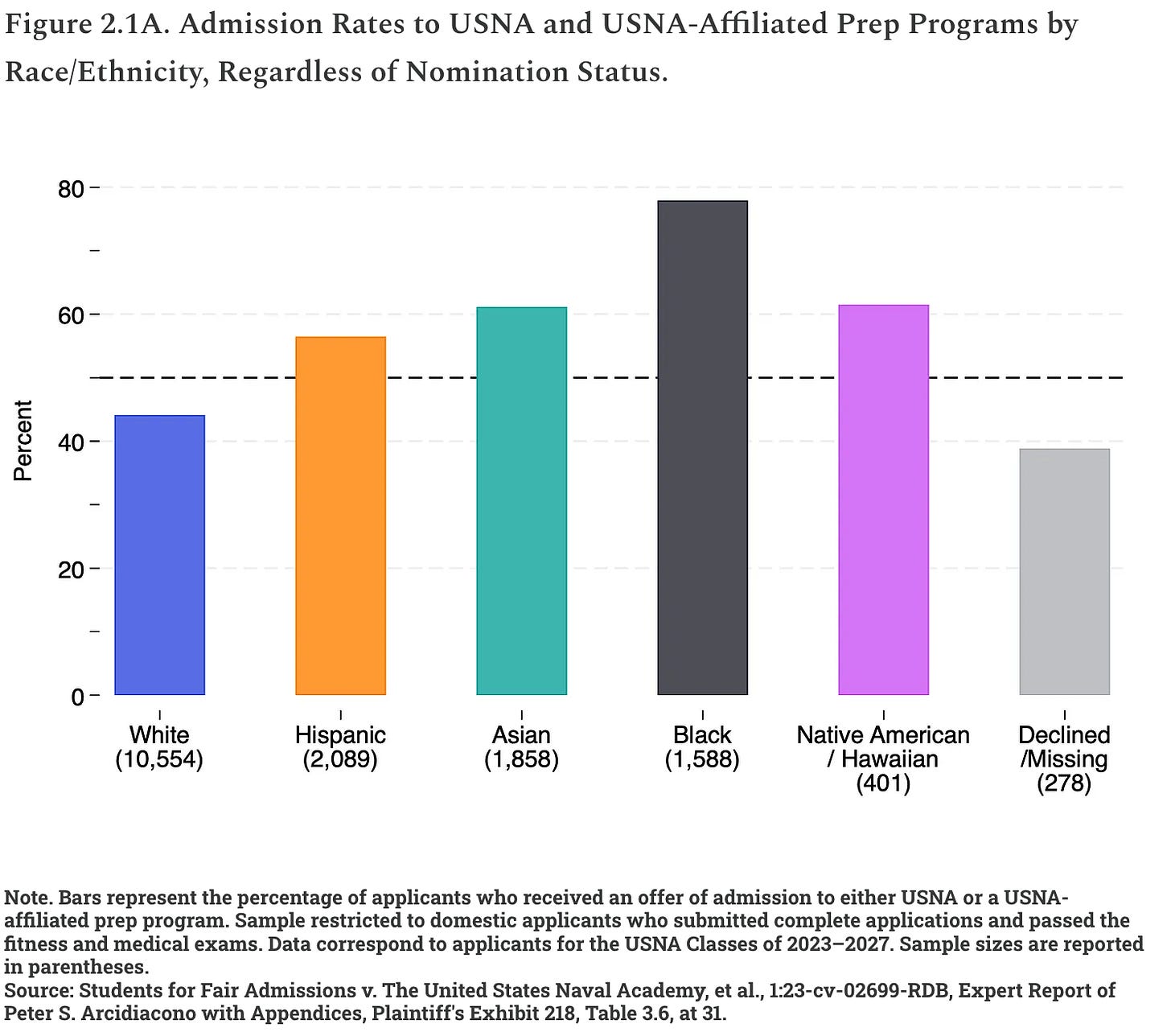
NAAA delenda est

The Naval Academy Athletic Association (NAAA), which holds significant influence at the USNA, has co-opted the Naval Academy Preparatory School (NAPS) as a way to “redshirt freshmen” at the expense of helping prior-enlisted and those from poor performing schools who show promise get read for the academic demands of USNA. This also explains why, as we’ve showed before, they are ear-deep in the DEI efforts at USNA.
Shameful.

There is only one fair way to interpret the above data and below.
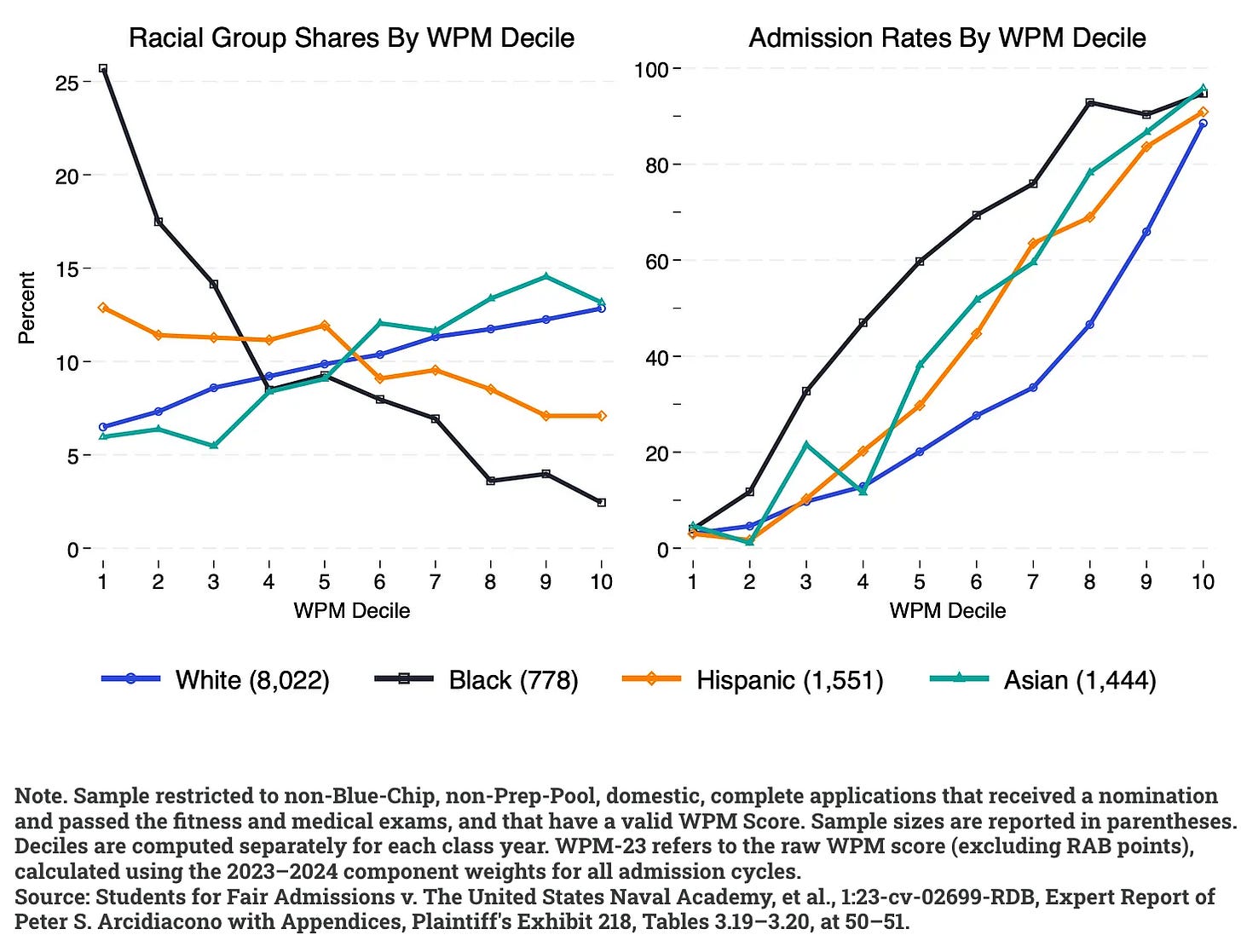
Never forget that in the zero-sum game that is admissions, to give to one sectarian group, is to take away from another, and never forget that this is being done to young men and women born in the mid-2000s.
Name one military system and nation that has prospered under such a system.
This is not a meritocracy.

The NAPS data is almost unimaginable…if this is new to you. But even for someone looking at this for a few decades, it is shocking.
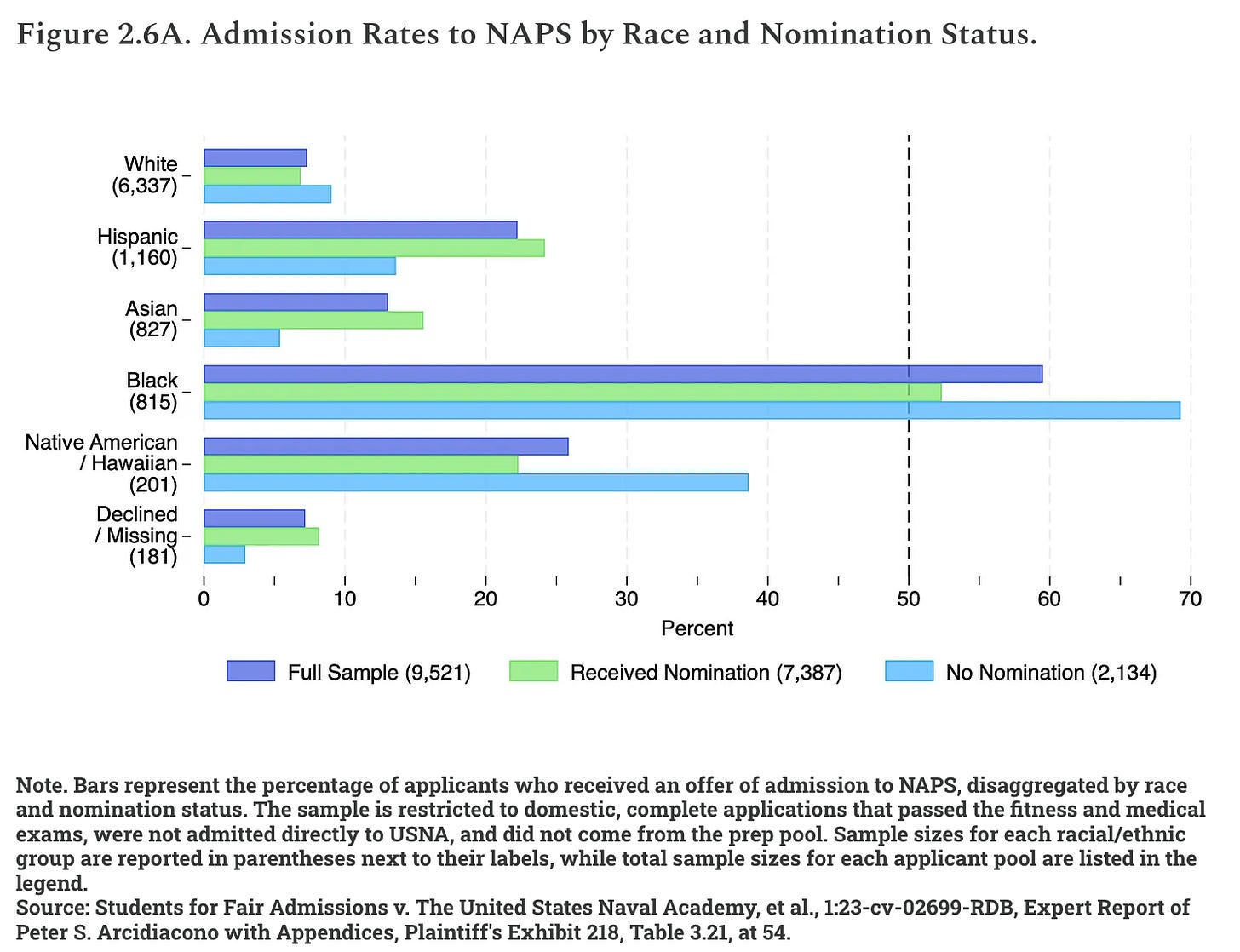
This system was designed to do one thing: discriminate against self-identified ‘white’ men and women who were almost all born in the 21st Century and for almost half their life were citizens of a nation led by President Barack Obama. Woe be it to anyone who did not identify as part of any ethnic group.
Yes, you should feel bad that your tax dollars and your Navy did such things.
So, that is admissions. How did performance pan out once they were in school?

As I have pointed out on Thursdays for a couple of decades, if you admit people from different sectarian groups into competitive situations with different thresholds, regardless of the exemplary quality of some of the individuals in the groups admitted under lower thresholds, the group as a whole will, when measured by objective criteria, perpetually underperform relative to other groups throughout their career pipeline.
This underperformance will be measured, and if there is a requirement that all group outcomes must be the same, then throughout the lifecycle, discriminatory external efforts will be made to skew results by taking away from overperforming groups and giving to underperforming groups.
Both the average underperformance will be clear to any objective observer, as will the different phase-milestone discrimination that takes place to “make the metrics work.” The people who will notice the most will be the other peer groups held to a more demanding standard. The lack of fairness will be unavoidably obvious.
This is how we got here.
Take a bow NAAA. Take a bow.

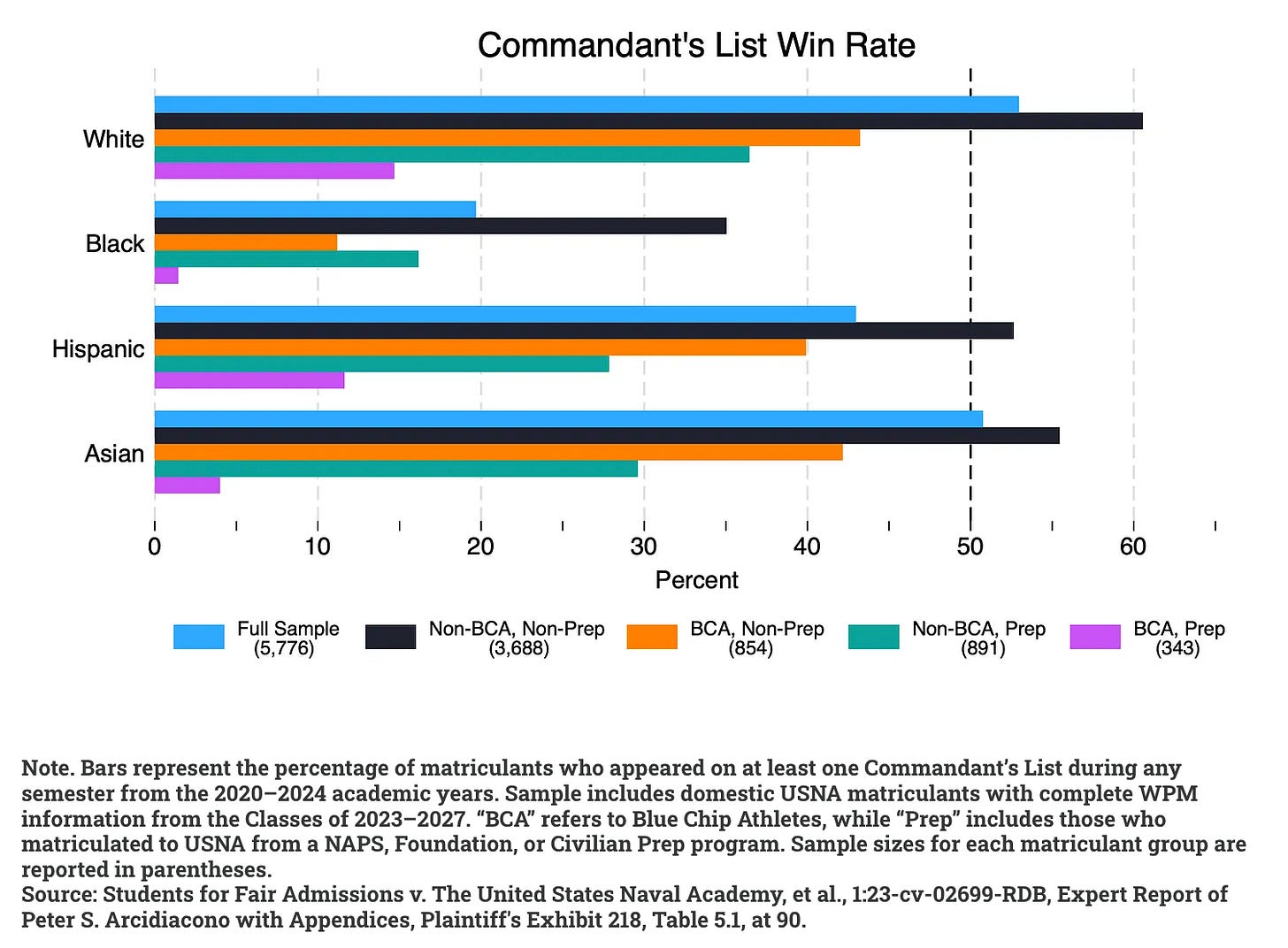
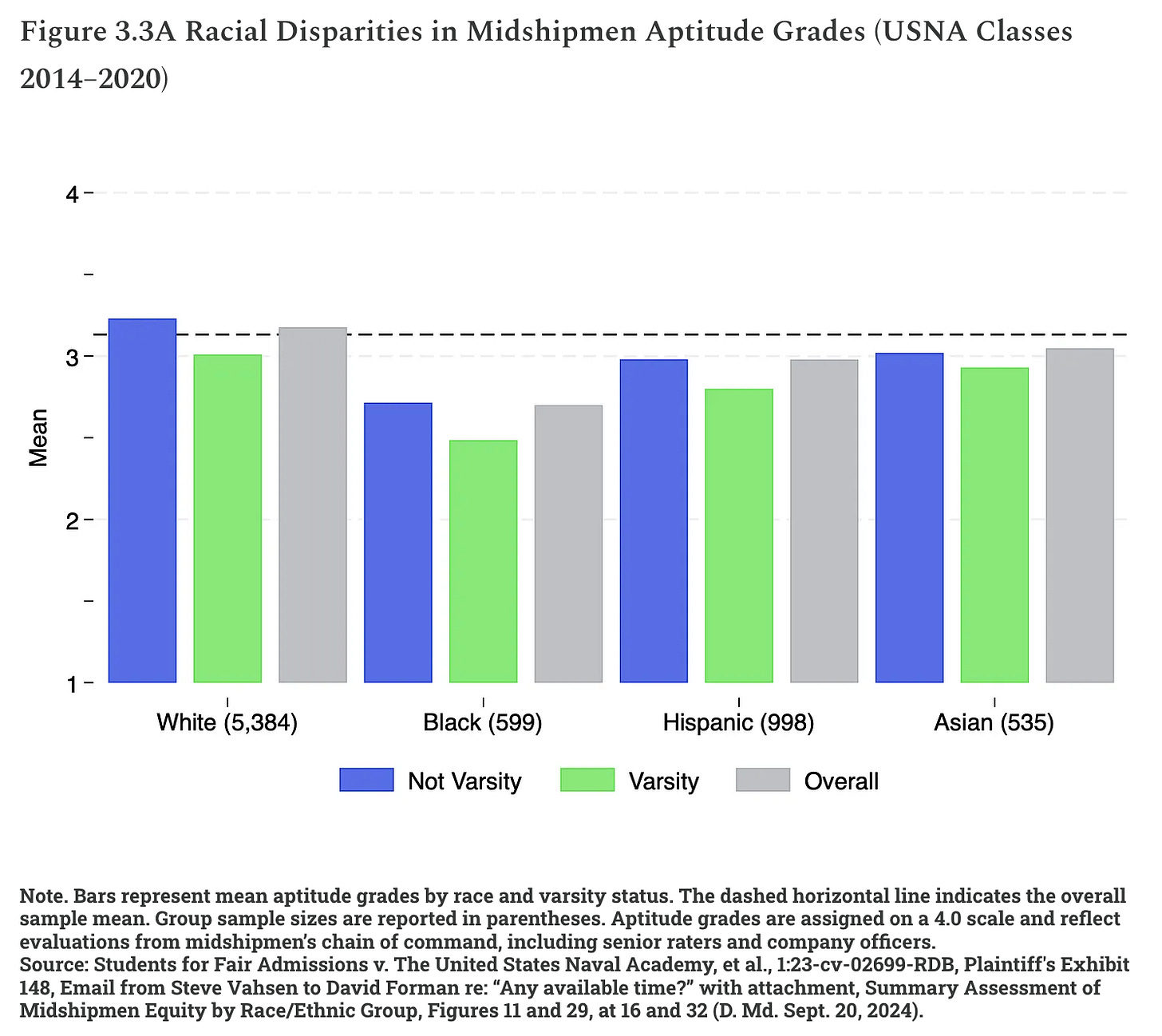
Even in non-academic areas, there is a trend. Admissions under different standards of qualification by objective standards will get different results. This isn’t rocket science.

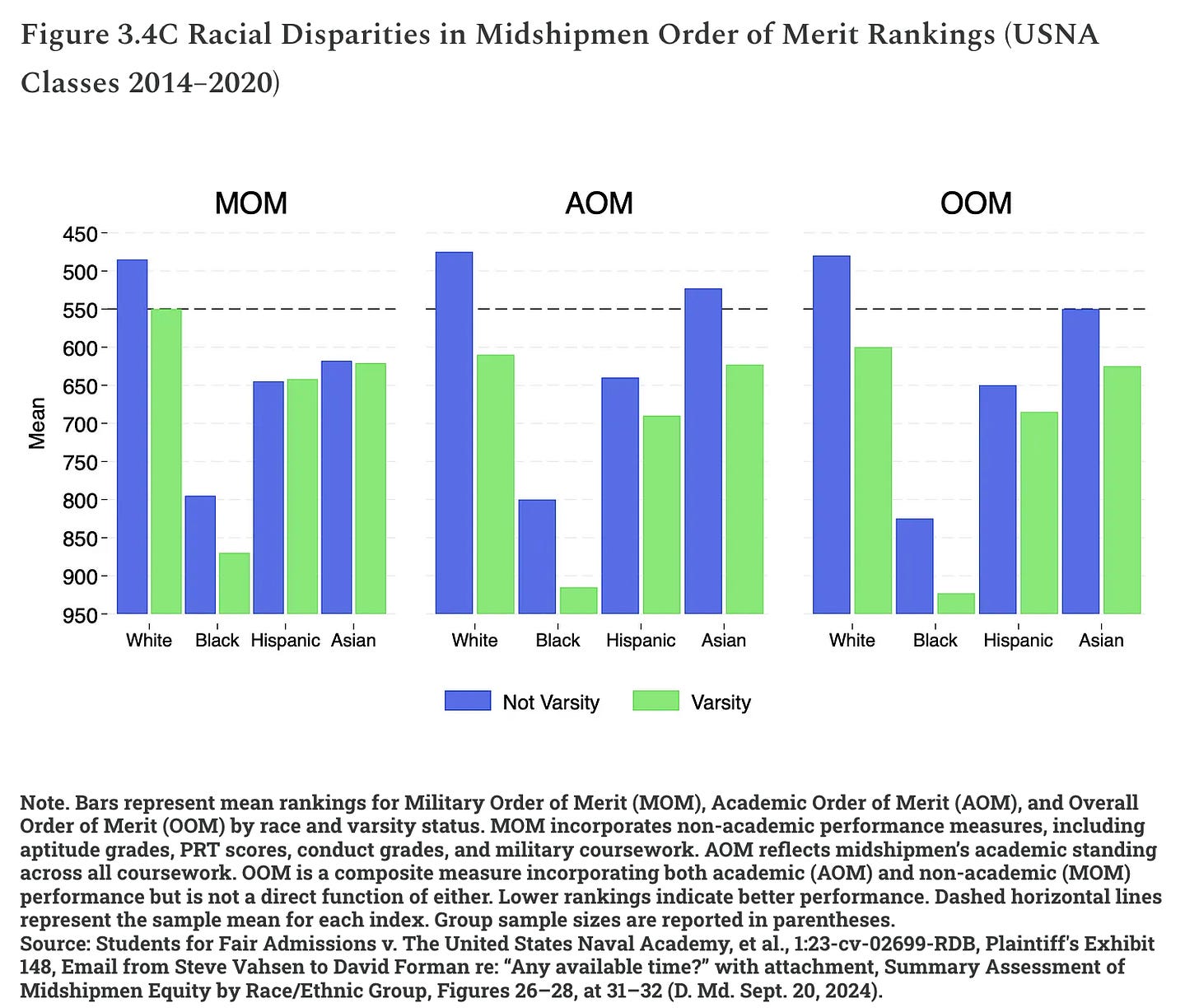

What is, at the end of four or five year, being delivered to the fleet?
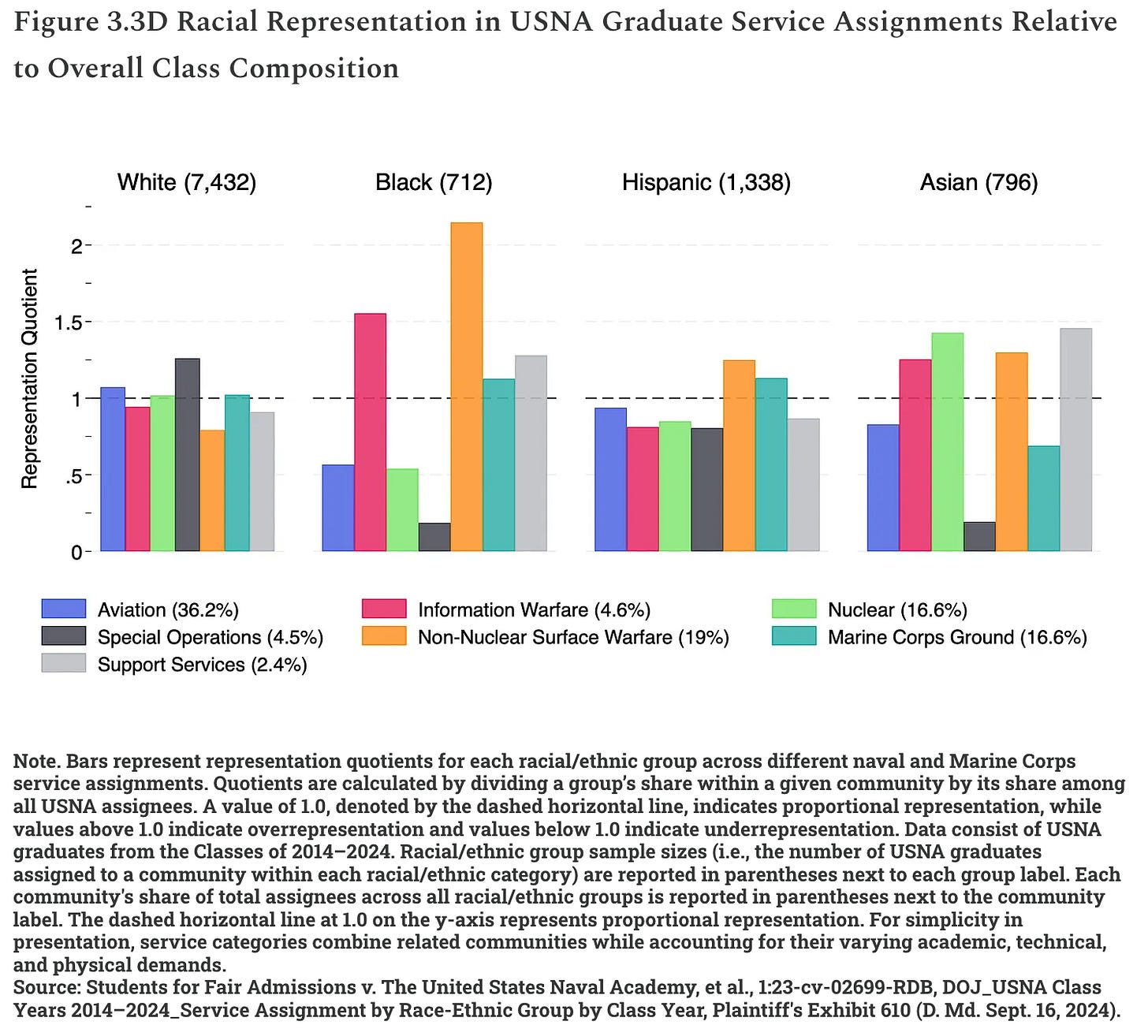
For those who think that these decades of racial discrimination aimed at making the Navy’s officer corps “look like America” — what have you gained for all the compromise of honor, fairness, and the promise of judging people by the content of their character?
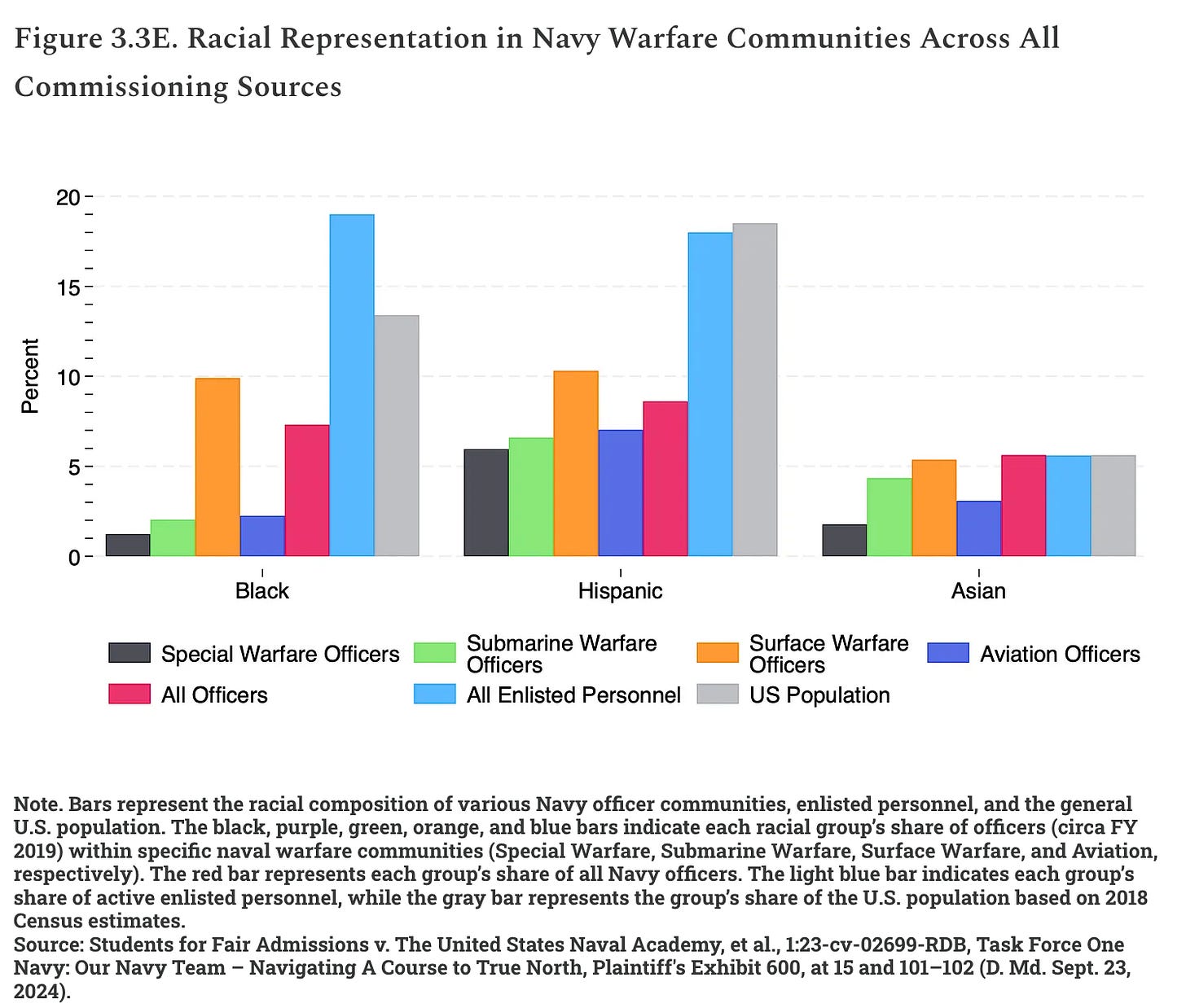
With the clear evidence of the discrimination already done, what more are you willing to do to achieve your goals? Are you willing to say what it is in the open?
USNA and the military in general is on the receiving end of a nation’s 18-year process of providing the raw material for those who serve. If one group or the other is underperforming in objective criteria areas, then focus your well-meaning attention there. Don’t choose the dark path of discrimination after the fact to reverse-engineer a counter-productive result you wish existed. No one wins.
As always, the final victims here are those from self-identified racial minorities who would have been accepted regardless of their group but will always be tainted.
That isn’t fair to them, the Navy, or the nation it serves.
First published on CDR Salamander’s Substack (read the comments)

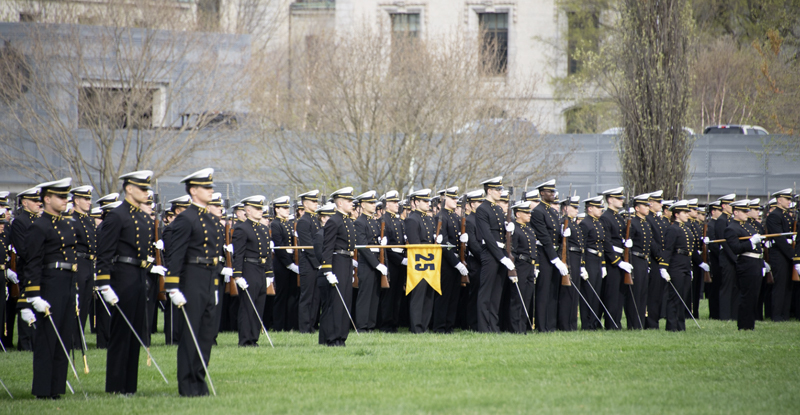





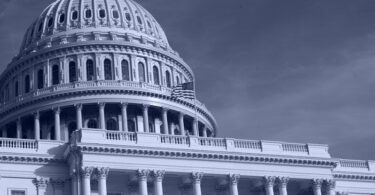
Leave a Comment